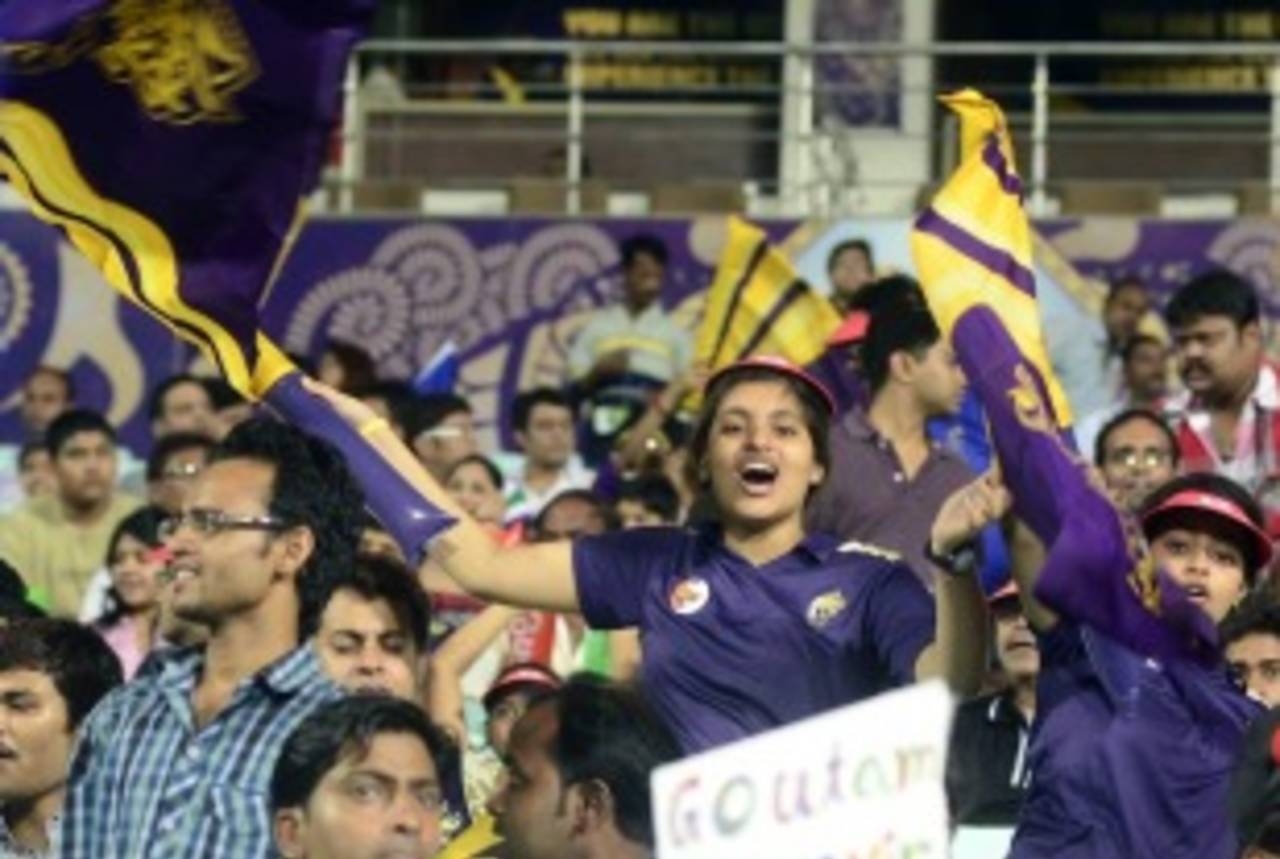The IPL can learn from other sports leagues
From season tickets to merchandise, there are many ideas that the IPL can adopt to increase the spectator presence in stadiums
Ramakanth Josyula
11-Apr-2013

Selling season tickets is one way to increase fan base • AFP
In its sixth season, the IPL has sustained its viewership incredibly well. What it has not been able to achieve are consistent full houses at all stadiums. A perfect example would be the Hyderabad stadium, which had empty stands. It is here that the IPL can learn from different city-based sports leagues in the USA and UK.
The marketing strategies used by these leagues cannot be used by the IPL because of the obvious differences, but there are a few good initiatives that can help improve the brand. In the case of NFL and NBA, the lack of international games works in their favour. Since the audience does not support the national team every month, it is easier for them to support the home side and look at every other side as rivals. For cricket, this is not plausible given that, for 10 months in a year, an Indian viewer supports the 15 players who play for India. To suddenly ask them to support a city side and consider another Indian player a rival is a tough ask. This is where the marketing of the IPL teams has faltered slightly in previous years.
Cricket is a religion in India and most of the spectators who thronged the IPL in its first two seasons came to watch the cricket first and then support their home side, if they felt like doing so. If the franchises had used 'cricket' as a brand and aggressively promoted the stadium experience, they could have achieved better results. A Deccan Chargers game with Mumbai Indians should have had publicity that featured Sachin Tendulkar. Once the spectators were in the stadium, the strategy should have then shifted to converting them into loyal fans of the home city. Cricket is still the big draw for a lot of Indians and fans also support other teams that feature their favourite players.
Cricket is a religion in India and most of the spectators who thronged the IPL in its first two seasons came to watch the cricket first and then support their home side, if they felt like doing so.
The ticket structure also needs some innovation. The ideal way to increase the fan base is to have repeat audience who come regularly to the game. Like the NFL, selling season tickets is a way of increasing the fan base. A prepaid, discounted season pass also ensures a high percentage of repeat audience since those who have a pass would not like to waste it. Franchises should also try to bring in people at the half-way stage of a game, selling available tickets at reduced prices to attract crowds.
There are other initiatives the IPL could consider, around the idea of season tickets. For instance, giving season-ticket holders extra privileges, like interactions with players, discounted rates for merchandise and access to choose their seats. Franchises would also benefit considerably in tying up with universities and colleges, giving youth access to season passes. The masses who make up the vast majority of the crowd at a stadium should be encouraged to buy more than one ticket at a time for a free franchise fan t-shirt. While the free merchandise is tempting, it will also increase the number of people wearing team colours on game day, creating a sense of loyalty with the team.
Another factor that works against the IPL is the timing of the matches. The 4pm and 8pm slots do not help the office-going audience. Moving the games to 6pm and 9pm, and ensuring that they end on time will bring more spectators to the game.
Until the IPL began, April was a month for big movie releases. Marketing for the IPL can also involve attracting the movie-going public to the game. This can be done by either showcasing the three-hour game as an alternate entertainment experience at the stadium or by having live screenings of matches in theatres. The experience of watching players on the big screen in a stadium-like atmosphere at a low cost is an attractive prospect.
Lastly, sustaining year-round loyalty when a team only plays for 10 weeks a year is a difficult task. Having franchises develop their teams by having under-15, under-17, under-19 and under-21 tournaments periodically, without compromising domestic schedules, will help the franchise reach out to loyal fans and also build fan bases for local players who impress as they rise through the ranks.
If you have a submission for Inbox, send it to us here, with "Inbox" in the subject line